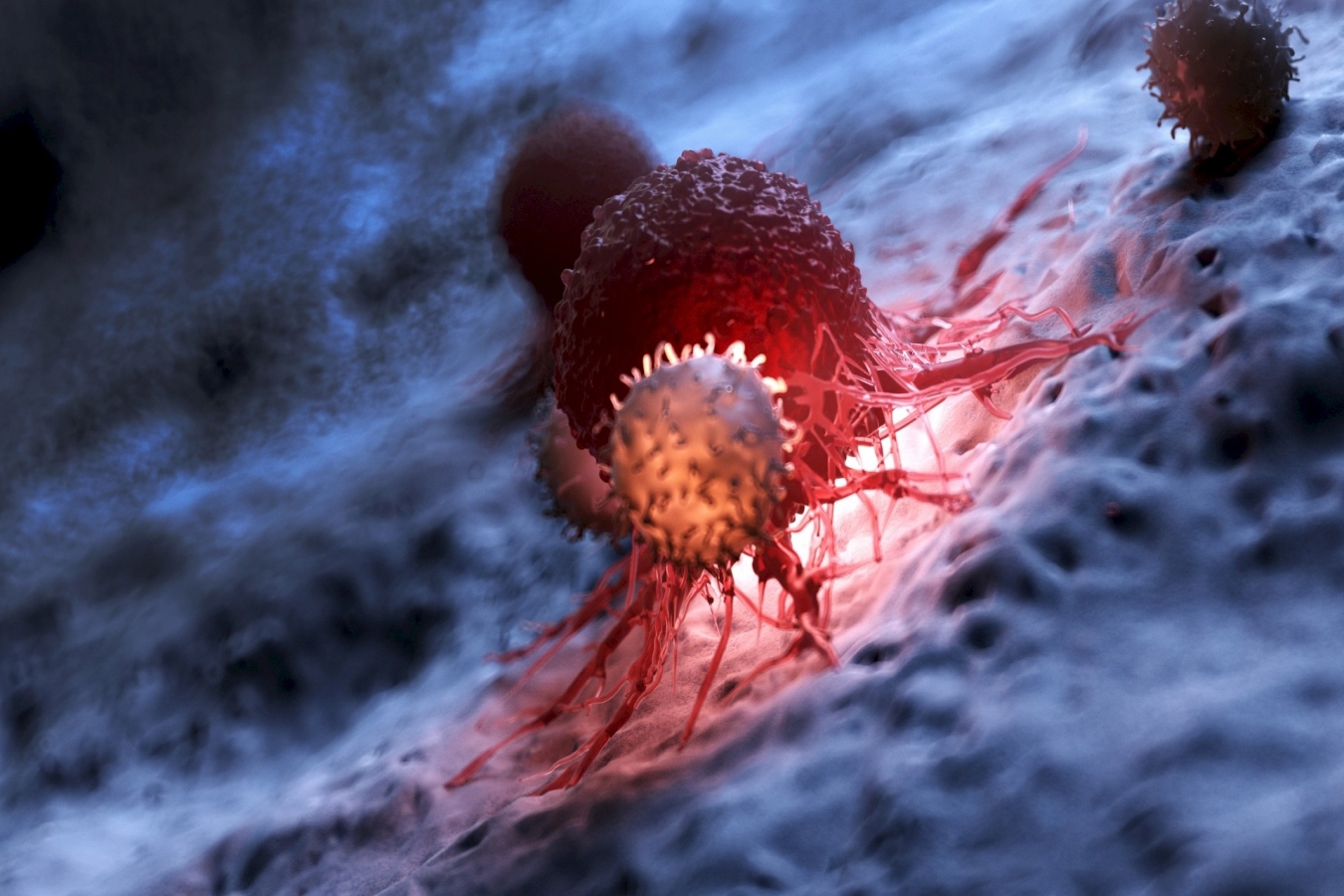


 5:38:12
5:38:12  2019-06-22
2019-06-22  953
953

Dead cells in the body don't sound very useful, but they might provide a new way to fight cancer, a new study in animals suggests.
The study found that injecting dying cells into tumors in mice drove the animals' immune cells to attack the cancers. The method is a bit like throwing blood into the water to drive sharks into a frenzy.
These findings could lead to new ways of tricking the immune system to help kill cancers, researchers said.
Still, the findings are very preliminary, and much more research is needed to examine whether such a method could have benefits for humans, the researchers said. [7 Odd Things That Raise Your Risk of Cancer (and 1 That Doesn't)]
Cancer patients are often treated with radiation therapy or chemotherapy, but these can have the unwanted side effects of killing healthy cells along with cancerous ones. So researchers have long sought ways to spur cancer cells to kill themselves or to have the immune systems of patients attack tumors.
Human cells normally possess a number of different techniques for killing themselves in response to specific circumstances. In the new study, scientists focused on one form of programmed cell death known as necroptosis, in which cells become riddled with holes, spurring them to release inflammatory chemicals that summon immune cells to finish off the damaged cells.
"The necroptotic pathway probably helps coordinate immune responses to virally infected cells," study senior author Andrew Oberst, an immunologist at the University of Washington in Seattle, told Live Science.
Study lead author Annelise Snyder, an immunologist at the University of Washington, along with Oberst and their colleagues, first genetically engineered mouse cells that underwent necroptosis when given a harmless substance. Next, the team injected these engineered cells directly into tumors in mice.
The researchers found that the dying cells spurred immune cells to attack cancer cells not just at the tumors, but throughout the bodies of the mice.
Since injections of genetically engineered cells might not prove especially practical for treatments in humans, the researchers also developed another strategy to activate necroptosis. Specifically, they placed a gene for a necroptosis-triggering enzyme into a virus and then used that virus to infect tumor cells. This likewise helped the immune system kill tumor cells.
"The dead-cell injections were just a proof of concept, a simple way to test immune responses to necroptotic cells," Oberst said.
In the future, the researchers hope to experiment in mice with tumor types that more closely resemble the cancers seen in humans, Oberst said.
Reality Of Islam |
|

New scienti

This is the

A computer

Auburn Univ
 9:3:43
9:3:43
 2018-11-05
2018-11-05
10 benefits of Marriage in Islam
 7:5:22
7:5:22
 2019-04-08
2019-04-08
benefits of reciting surat yunus, hud &
 9:45:7
9:45:7
 2018-12-24
2018-12-24
advantages & disadvantages of divorce
 11:35:12
11:35:12
 2018-06-10
2018-06-10
 6:0:51
6:0:51
 2018-10-16
2018-10-16
 8:15:37
8:15:37
 2023-02-16
2023-02-16
 1:16:44
1:16:44
 2018-05-14
2018-05-14
 4:25:57
4:25:57
 2023-02-11
2023-02-11
 7:59:14
7:59:14
 2018-06-21
2018-06-21
 8:30:23
8:30:23
 2022-03-03
2022-03-03
 2:2:13
2:2:13
 2022-10-08
2022-10-08
 3:18:29
3:18:29
 2022-12-24
2022-12-24
 5:41:46
5:41:46
 2023-03-18
2023-03-18
| LATEST |